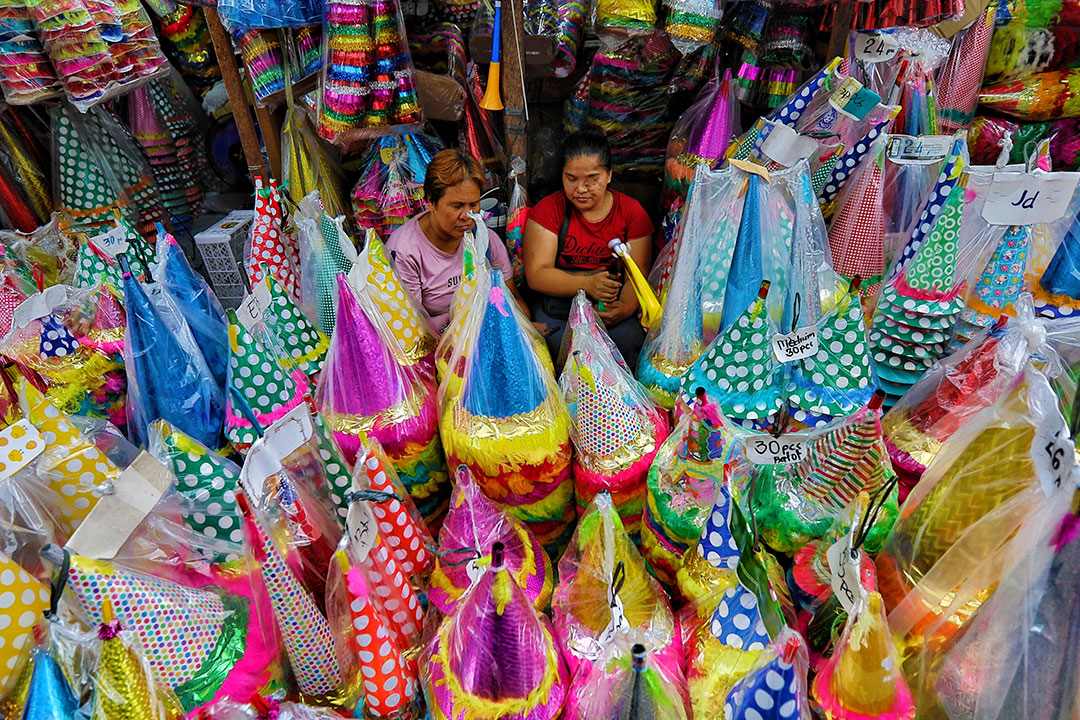




Quarterly Economic Growth Release: More BSP cuts to come
 DOWNLOAD
DOWNLOAD

Monthly Economic Update: Fed catches up
 DOWNLOAD
DOWNLOAD

Inflation Update: Steady and mellow
 DOWNLOAD
DOWNLOAD


PH projected to grow 6% this year

The Philippines’ gross domestic product (GDP) is projected to grow faster this year as easing inflation will help boost “revenge spending,” analysts said.
First Metro Investment Corp. (FMIC) and the University of Asia and the Pacific (UA&P) said they expect GDP growth at 6% this year, still below the government’s 6.5-7.6% target.
“I think they will not be able to make the 6.5% unless foreign investments come in. And so far, if we look at 2023, foreign investments were actually down significantly… but we have to see how things pan out in the coming months,” Victor A. Abola, an economist at UA&P, said at a briefing in Makati City on Thursday.
FMIC and UA&P projected full-year GDP to average 5.5% in 2023, still below the government’s 6-7%. The economy grew by 5.5% in the nine-month period.
The Philippine Statistics Authority (PSA) is set to release full-year 2023 GDP data on Jan. 31.
“Growth will accelerate from 5.5% (in 2023) to 6% (in 2024), driven by the services sector, particularly, transport, accommodations, and food services, which are experiencing revenge spending,” Mr. Abola said.
Filipino consumers are expected to continue to splurge this year, which will help drive growth.
“We’re just seeing the beginning of (revenge spending) because high inflation has sort of toned down that expansion. So, I think that we’ll see faster GDP growth in 2024,” Mr. Abola said.
Improved employment will also boost the economy this year, Mr. Abola said, citing the record low jobless rate seen in November.
The country’s unemployment rate fell to 3.6% in November from 4.2% in the previous month and a year ago, marking an 18-year low. In November, the number of employed people also rose to 49.64 million from 47.8 million in October and 49.7 million in November 2022.
FMIC Executive Vice-President Daniel D. Camacho said the BSP will likely keep rates steady for the first half.
“Our fearless forecast for yearend is a reduction of 75 bps to 125 bps across the curve,” Mr. Camacho said. “We do not foresee a cut in BSP rates in the first half but possibly one or two in the second half of the year which will further push rates downwards.”
The benchmark rate is currently at 6.5%, the highest in 16 years. From May 2022 to October last year, the BSP raised borrowing costs by a total of 450 bps.
“I think the BSP will be quite slow in cutting rates, the first one is 25 bps likely in June and depending on the Fed moves, it will probably mimic the rate cuts in the second half,” Mr. Abola added.
The Monetary Board is set to have its next policy review on Feb. 15.
Optimistic outlook
Meanwhile, BMI Asia Country Risk Analyst Shi Cheng Low said Philippine GDP growth is seen to pick up to 6.2% in 2024 from a likely 5.7% in 2023.
“There are two main reasons behind our more optimistic view. One is easing inflation… which is really good news for household incomes and (will) support private consumption,” Mr. Low said.
“We expect the resilience in private consumption to remain throughout 2024 and on top of that, because we are expecting cuts in the second half of the year, this will actually help a rebound in investment growth,” he added.
Mr. Low noted easing price pressures will also prompt the BSP to loosen policy in the second half of this year.
Inflation averaged 6% for 2023, slightly higher than 5.8% in 2022. This marked the second straight year that inflation breached the BSP’s 2-4% target band.
This year, the central bank expects full-year inflation to ease to 3.7% and 3.2% in 2025.
Mr. Low also said foreign direct investment (FDI) net inflows to the Philippines will pick up in 2024.
“Because we are expecting rate cuts in major economies in the second half of the year including the Fed, we expect FDIs to pick up significantly, at least, in terms of foreign investments into the Philippines,” he said.
The BSP expects FDI net inflows to have reached USD 8 billion at the end of 2023, before accelerating to USD 10 billion by end-2024.
Debt
FMIC’s Mr. Abola said he also expects debt as a share of GDP to ease further this year.
“We’re seeing that it will ease to 60.4% this year and continue next year to about 59%. We are on the way to providing more fiscal space, with faster growth and lower interest rates,” he added.
The National Government’s debt-to-GDP ratio stood at 60.2% as of end-September. This is still slightly above the 60% threshold considered by multilateral lenders to be manageable for developing economies.
The government is targeting to bring the ratio to below 60% by 2025.
On the other hand, Mr. Abola said that the government must also work on beefing up its gross international reserves.
“We need to rebuild our gross dollar reserve because (it) is not very ideal for the environment in which we have global markets that we can easily move money around,” he said.
Latest data from the BSP showed that dollar reserves slipped by 0.3% to USD 102.45 billion as of end-December from USD 102.72 billion in November. — Luisa Maria Jacinta C. Jocson and Keisha B. Ta-asan
This article originally appeared on bworldonline.com





 By BusinessWorld
By BusinessWorld